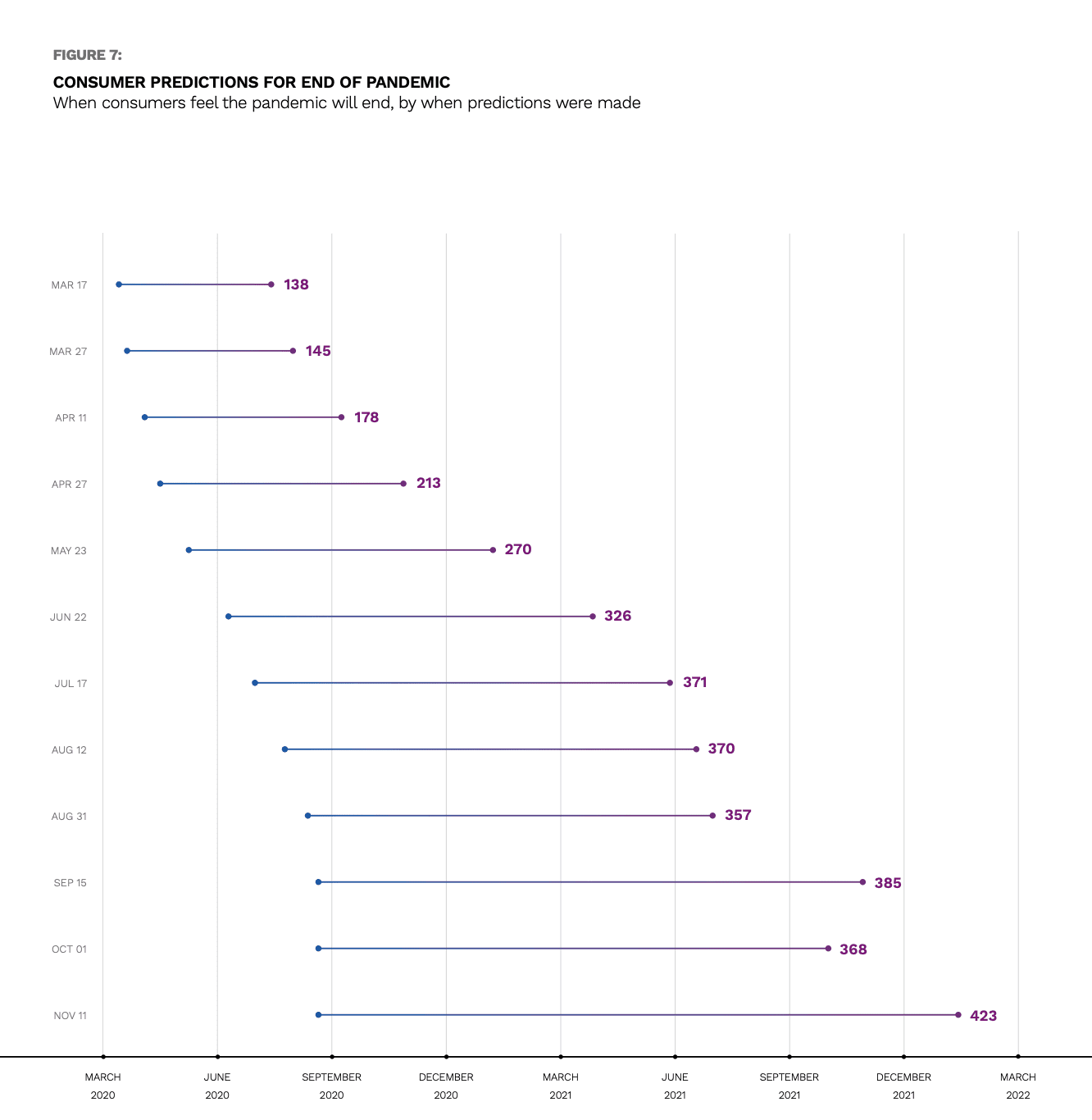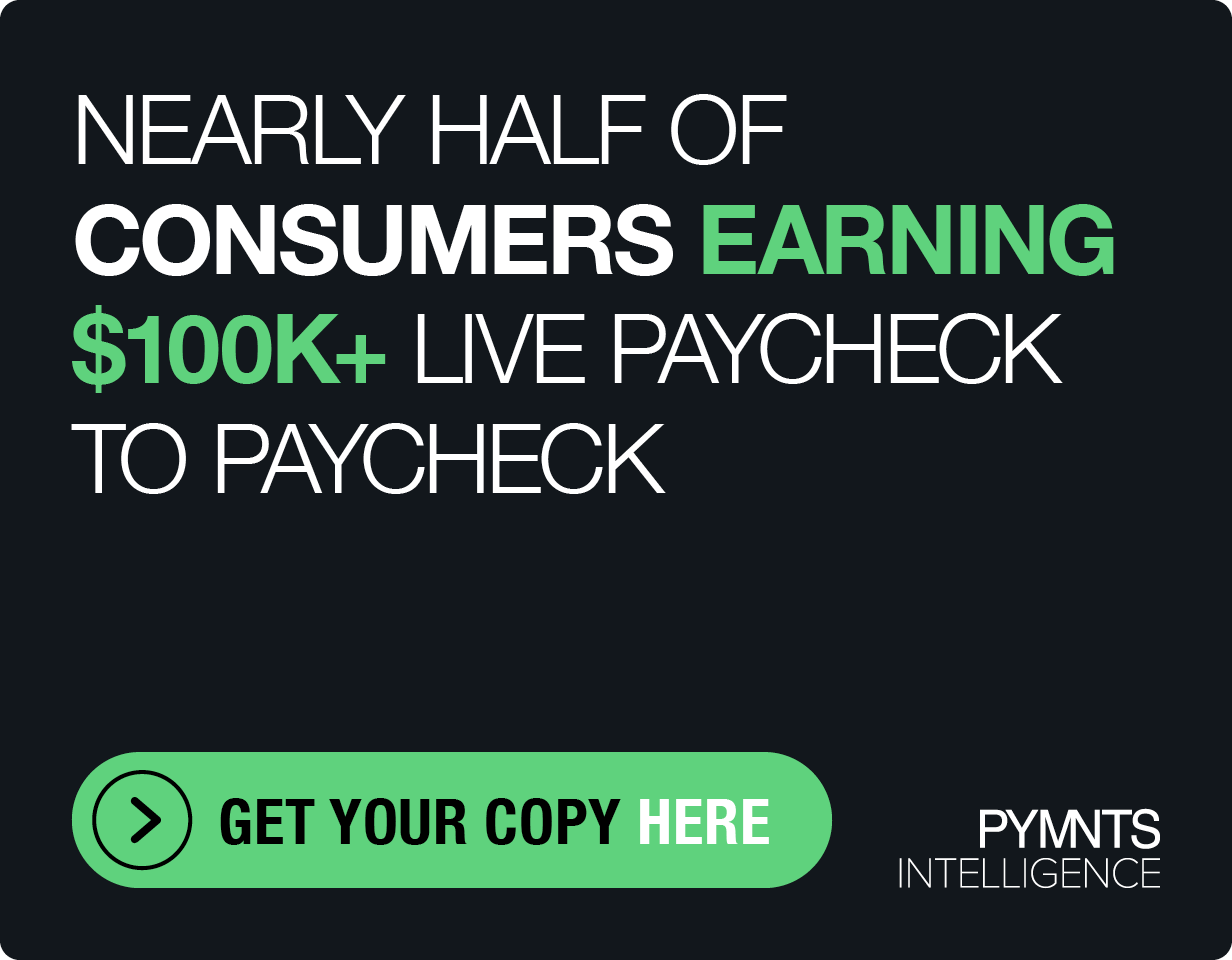Brand-New Data: Imminent Vaccine Availability No Magic Bullet Against COVID Fears
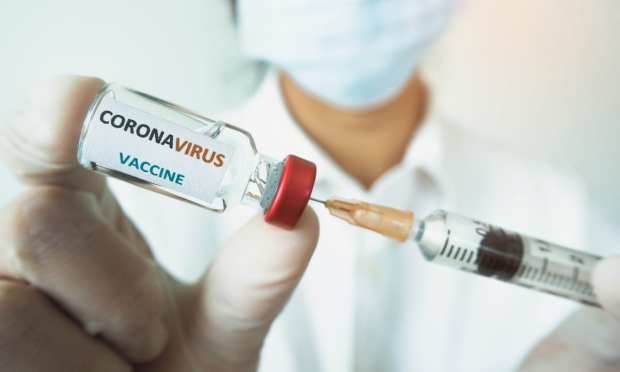
Days after the first Pfizer/BioNTech vaccine announcement was made, PYMNTS set out to discover how a much-anticipated COVID-19 immunity shot is likely to move the needle of normalcy and begin to boost confidence, allowing America to affect a recovery in full.
Surveying a census-balanced panel of over 2,800 U.S. consumers about how shopping and payment preferences will change if a vaccine is available when 2020 ends, PYMNTS got some surprising responses, including this eye-opener from To Vaccinate Or Not To Vaccinate: Measuring The Impact Of A Covid-19 Vaccine On Consumers’ Digital Lifestyles: “Only 37.9 percent of consumers are definitely interested in getting vaccinated. The rest are either slightly interested or not interested at all.”
PYMNTS researchers found consumers to be well-informed about COVID-19 as well as the three-pronged, three-company plan for creating a vaccine at “warp speed” — the White House’s code name for an unprecedented collaboration of Big Healthcare, Big Pharma and the Feds.
Per the new study, “consumers (81.7 percent) were well-informed about the vaccine news — a significant share considering the announcement had just come out three days prior,” yet “among consumers that are familiar with news of the vaccine, just as many say they definitely or likely would not get the vaccine (38.4 percent) as those who say they definitely or very likely will (37.9 percent).” Consumers’ interest in the vaccination is largely generational.
“Interest is particularly high among older generations, with 46.5 percent of baby boomers and seniors very or extremely likely to get vaccinated,” PYMNTS found. “In comparison, nearly a third of millennials and bridge millennials (those born between 1979 and 1988) express the same level of interest in getting vaccinated.”
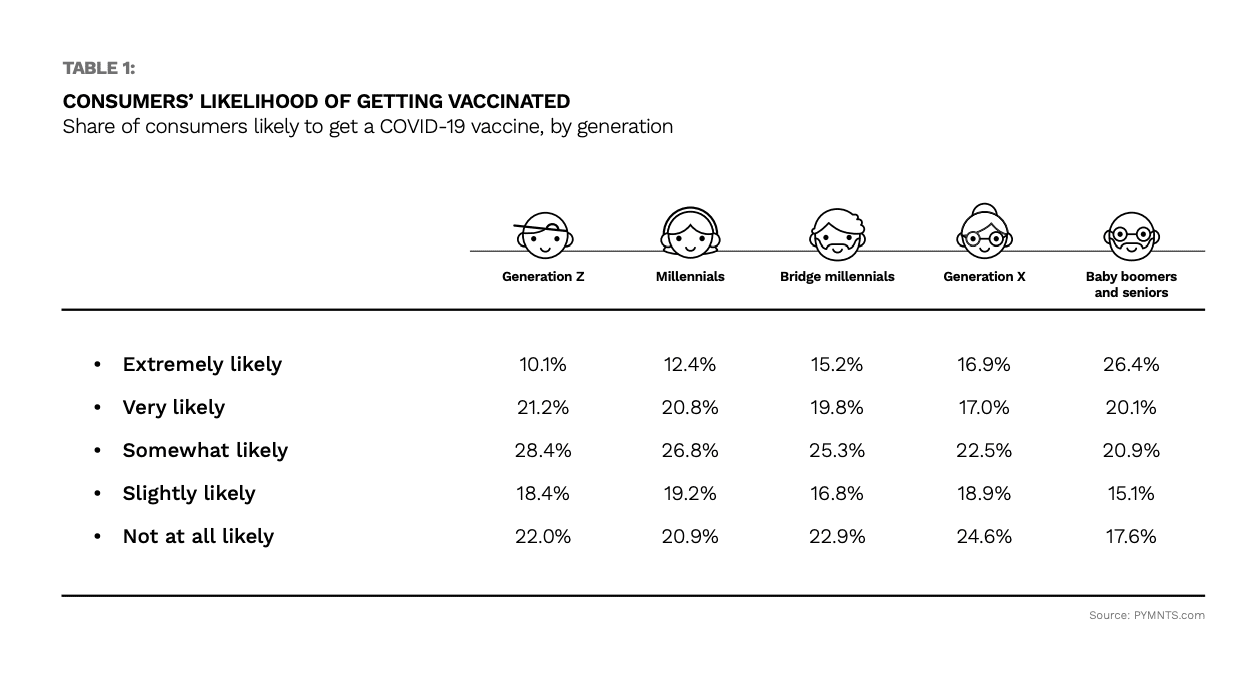 Many Digital Shifters Keeping Their Distance
Many Digital Shifters Keeping Their Distance
As could have been predicted, those most enthusiastic about a vaccine are those who have been most concerned about contracting COVID all year. Digital shifters all, but it’s not that simple.
PYMNTS researchers make the point succinctly, stating that “consumers who have shifted to digital ways to shop and pay over the last nine months have done so because they are afraid of the risks associated with visiting brick-and-mortar stores. After nine-plus months of surviving the challenges posed by the pandemic, 47 percent of consumers have shifted their retail shopping habits to digital, and so have 21 percent of consumers who are shopping for groceries online and 21 percent of consumers who are buying food from restaurants via digital channels.”
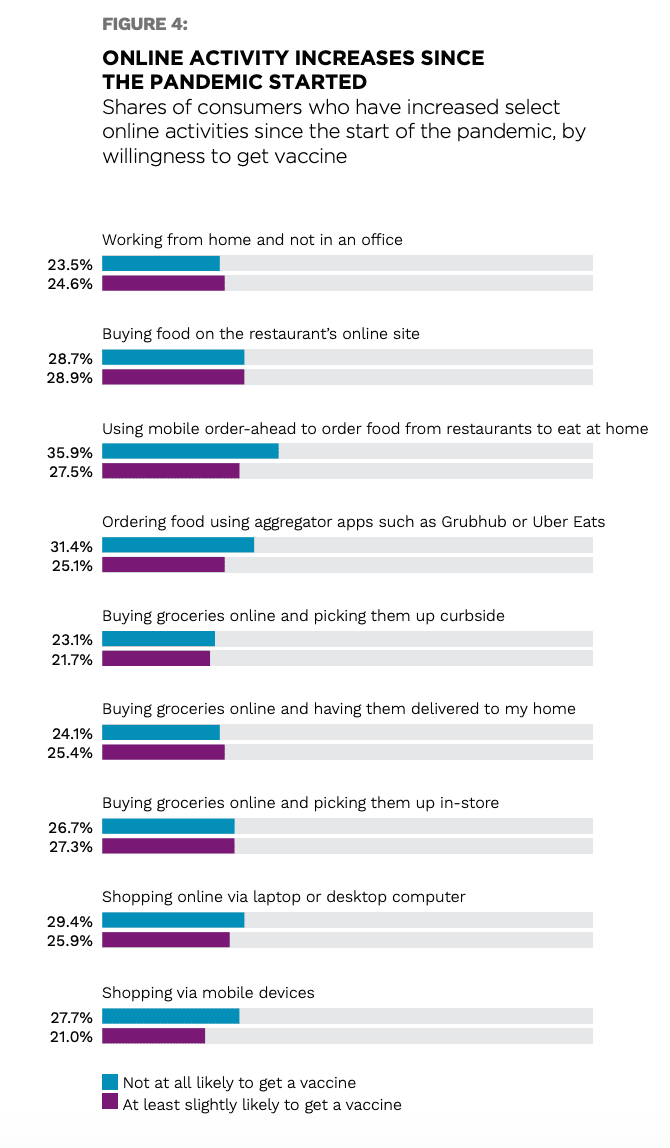
Put another way, consumers likely to get vaccinated did the digital shift for shopping and payments convenience, and so as to avoid catching COVID while in a store or a bank.
What’s more, many of them won’t be going back to pre-pandemic routines like visiting stores, with PYMNTS finding that “of the 54.7 percent of respondents who are at least slightly likely to get vaccinated and who increased their shopping through mobile devices, only 21 percent plan to return to how they shopped before,” per the report.
Human Contact A Powerful Driver Post-COVID
All this talk of “getting back to normal” begs the question: What is normal? It’s a moving target.
Of respondents to this latest PYMNTS COVID-19 study, “normal” means seeing friends and family in the old familiar places, having a meal, and attending services, cookouts and vacations.
“Consumers who have an interest in getting a vaccine say they want to be able to freely see their family and friends (29.6 percent) and be free of having to wear masks and social distancing requirements,” per the latest PYMNTS research.
They also crave leisure activities like going to the movies or attending sporting events and concerts (18.8 percent), traveling freely within the U.S. (15.5 percent), and returning to dining out at restaurants (11.2 percent). Traveling internationally, returning to offices and work settings, and shopping in-store “are a priority for a relative minority of consumers.”
The bottom line? There isn’t one yet. Some are all-in for the vaccine and a headlong dive back into close quarters with their new immunity safely injected. Others remain highly fearful.
“Even though consumers want their lives to return to normal, the majority of them do not expect things to go back to business as usual until January 2022. In fact, consumers now expect the recovery to take longer than they did before,” per the new study. The pandemic’s duration has now gone from 368 days to 423 days in people’s minds, with COVID flareups now common.
